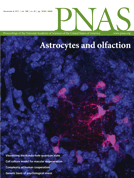 病原体会改变它们的宿主,比如疟疾寄生虫可以让人更招蚊子,但是它们是怎么样做到这点却一直是个谜。诺维奇科研园John Innes中心(JIC)的科学家首次从操控植物发育为己所用的寄生虫中鉴定出了一种特异性分子。
病原体会改变它们的宿主,比如疟疾寄生虫可以让人更招蚊子,但是它们是怎么样做到这点却一直是个谜。诺维奇科研园John Innes中心(JIC)的科学家首次从操控植物发育为己所用的寄生虫中鉴定出了一种特异性分子。
“我们的发现揭示了病原体分子如何通过其宿主改变第三方生物。”JIC的Saskia Hogenhout说道。
叶蝉是一种小型的以吸食植物汁液为生、传播速度快的高机会致病农业害虫。该虫的某些特定种可以携带并传播植物病原体,包括病毒和植物原生质体(小型细菌),Hogenhout博士和她的团队专注于一种叫做“翠菊黄巫师扫把”(Aster Yellows Witches' Broom)的植物原生质菌株的研究,这种病原体可导致多种植物的畸形。
Hogenhout 博士说:“由于这种植物原生质对低温敏感并可通过气候改变随温度升高而传播到新的地区,所以获得对其更深的了解非常及时。”
被感染的植物其多根茎杆生长成束,看起来就像巫师的扫把或树上的鸟巢。这种致病株最初分离自北美洲受感染的莴苣地。
这种植物原生质依靠叶蝉和植物宿主才能生存、繁殖与散布。新的研究发现现实了其操控植物宿主与昆虫间的反应以为己所用。
科学家们对这种“巫师扫把”植物原生质进行了基因组测序与检测,鉴定出了56个称作效应蛋白的分子,这些蛋白可能是引起这种复杂生物学反应的关键。
他们发现,效应蛋白SAP11减少了植物用于抵抗叶蝉的防御性激素的产生。结果,叶蝉就在感染了这种“巫师扫把”植物原生质的植物上生长并产卵,繁殖更多的后代。叶蝉也可能被吸引到成束的枝条或茎杆上产卵。
较高的产卵率可能匹配于以叶蝉为载体把植物原生质传播到其它植物的相同增长率。
“植物原生质提高叶蝉产卵及后代的数量可能具有一种竞争优势,” Hogenhout说。
由于它们的机会主义天性,叶蝉可能迁至未感染的植物并传播病原体。
“这是传播病原体一个生动的例子,一种由达尔人提出来的观点,即一种生物的显性不仅取决于其自身生物学过程,而且还取决于其对自身环境的影响。” Hogenhout博士说。
相关英文论文摘要:
Phytoplasma protein effector SAP11 enhances insect vector reproduction by manipulating plant development and defense hormone biosynthesis
Phytoplasmas are insect-transmitted phytopathogenic bacteria that can alter plant morphology and the longevity and reproduction rates and behavior of their insect vectors. There are various examples of animal and plant parasites that alter the host phenotype to attract insect vectors, but it is unclear how these parasites accomplish this. We hypothesized that phytoplasmas produce effectors that modulate specific targets in their hosts leading to the changes in plant development and insect performance. Previously, we sequenced and mined the genome of Aster Yellows phytoplasma strain Witches’ Broom (AY-WB) and identified 56 candidate effectors. Here, we report that the secreted AY-WB protein 11 (SAP11) effector modulates plant defense responses to the advantage of the AY-WB insect vector Macrosteles quadrilineatus. SAP11 binds and destabilizes Arabidopsis CINCINNATA (CIN)-related TEOSINTE BRANCHED1, CYCLOIDEA, PROLIFERATING CELL FACTORS 1 and 2 (TCP) transcription factors, which control plant development and promote the expression of lipoxygenase (LOX) genes involved in jasmonate (JA) synthesis. Both the Arabidopsis SAP11 lines and AY-WB–infected plants produce less JA on wounding. Furthermore, the AY-WB insect vector produces more offspring on AY-WB–infected plants, SAP11 transgenic lines, and plants impaired in CIN-TCP and JA synthesis. Thus, SAP11-mediated destabilization of CIN-TCPs leads to the down-regulation of LOX2 expression and JA synthesis and an increase in M. quadrilineatus progeny. Phytoplasmas are obligate inhabitants of their plant host and insect vectors, in which the latter transmits AY-WB to a diverse range of plant species. This finding demonstrates that pathogen effectors can reach beyond the pathogen–host interface to modulate a third organism in the biological interaction.







